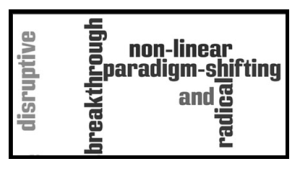 There is a growing, perhaps even an overwhelming business case, for transforming the innovation management structure.
There is a growing, perhaps even an overwhelming business case, for transforming the innovation management structure.
The new combination is the new connections through people and things (IoT) that we can achieve a new innovation potential.
We will obtain increasing more powerful insights that have the real potential of being turned into new innovation outcomes, through the connected businesses we are presently needing to build. This can generate new value and business propositions.
Today the virtual world of digital is moving much faster than the physical ‘enacted world,’ of turning insights into actual innovation activities, through the innovation pipeline. Our innovation systems are lagging significantly behind. We need to radically redesign them and bring them up to date, fit for managing innovation in the 21st century.
The whole discovery to final execution, is for most organizations still a very fragmented, often disconnected system. It is highly reliant on manual systems with people often disconnected from the real innovation engagement making decisions on inadequate data or insights.
We are failing to leverage all we have gained from our innovation understanding over the years. We have this ongoing inability to adapt, to connect the innovation system through the use of technology and growing value networks, so as to provide the integration, the dedicated resource and accountability to deliver successful innovation outcomes that our customers require.
Successful outcomes are certainly possible, from a well-designed innovation management system brought up to date, adaptive, flexible and responsive, if we apply the time and effort to conceive and construct it.
Continue reading “Technology leads, innovation exploitation is lagging”




